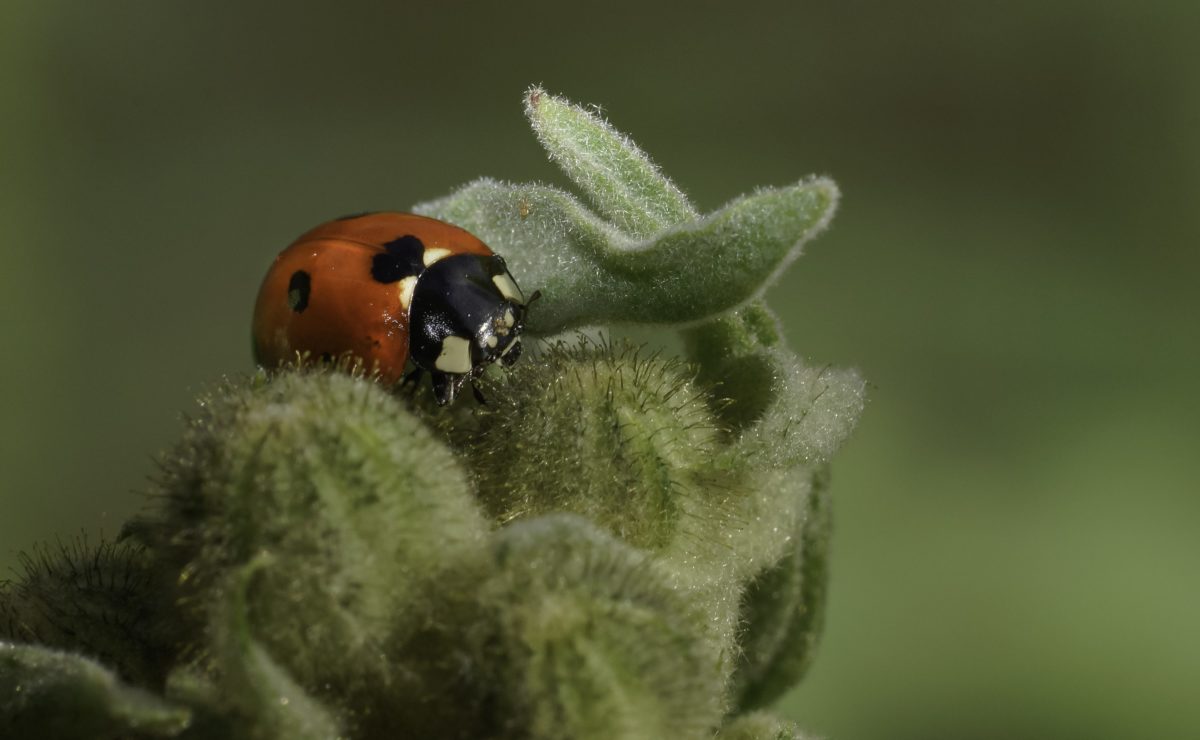Insects are generally known to be quite destructive or simply just annoying creatures to be around. Some insects even carry disease and could possibly trigger unwanted infections. There are some insects however that have proven to be considerably productive and valuable in nature. These are 12 insects you might want to have in and around your farm:
1. Ground Beetles

The first encounter with this insect could very possibly draw some goosebumps on a few people’s skins. The peaceful insect, however, could productively be utilized for what it preys on as it endeavors to continue surviving. On the ground beetle’s menu are; slugs, cutworms, colorado potato beetles, and caterpillars. The insect is attracted by evening primrose, Amaranthus, and clovers.
2. Ladybugs

These beautiful insects can undoubtedly do more than look pretty and adorable. If your farm contains either Dandelions, Fern-leaf yellows, Dill, or the not so fairy-tale type basket of gold, then it is an ideal destination for a ladybug. The ladybugs primarily prey on pests like aphids, mites, fleas, colorado beetles, and the whiteflies. It would, therefore, be advantageous to have ladybugs living on your farm as they naturally feed on destructive pests, considering that they can consume more than 5,000 aphids throughout their entire lifetimes.
3. Green Lacewings

It flies like your average but petite housefly and pretty much behaves just as much. It, however, quite pleasantly does more than annoyingly and irritatingly buzz around while aimlessly flying around. Attracted by the dill, golden marguerite, coriander, and angelica, the Green Lacewings will feast on whiteflies, leafhoppers, aphids, and mealybugs as is their essential survival requirement.
4. Braconid Wasps

Picturing wasps solicits unnerving thoughts of getting horrifyingly attacked and stung by them. Like bees, their stingers are lethal weapons to be avoided. Braconid wasps, however, go the extra mile at showing just how valuable they can be in their natural existence. Attracted to parsley, lemon balm, fern-yarrow, and common yarrow, the braconid wasp will take the destructive caterpillars and aphids off of your hands by feasting on the pests.
5. Praying Mantis

This insect is not only an inspiration to particular cultures around the world due to its nature. It can turn its head an impressive 180 degrees while scanning its environment for threats and prey alike and hunting methods. Furthermore, it is considerably helpful to have around your farm. This is because the praying mantis preys on a wide variety of pests, including crickets, caterpillars, moths, and beetles. They are attracted by marigolds, cosmos, dills, and tall grasses and shrubs.
6. Damsel Bugs

These insects will effectively counteract destructive pest populations on your farm. If they have the ideal places to hide, they can obliterate pests like cabbage worms, caterpillars, mites, aphids, and potato beetles. Damsel bugs are attracted by Spearmint, alfalfa, caraway, fennel, and Peter Pan Goldenrod.
7. Minute Pirate Bugs

Right from before they are fully matured, these bugs advantageously prey on other bugs and smaller pests as is required for their survival in the ecosystem. Much like the damsel bugs, the minute pirate bugs are attracted by Spearmint, alfalfa, caraway, fennel, and Peter Pan Goldenrod and very effectively prey on pests like insect eggs, spider mites, aphids, thrips, and caterpillars.
8. Spiders

As much as spiders are often known to strike, sometimes paralyzing fear into the hearts of those who encounter it, they could be of immense value in managing pest populations on your farm. Naturally preying on numerous pests like bed bugs, roaches, grasshoppers, mosquitoes and fruit flies, spiders are attracted to tall plants if they are of the weaving kind and mulch if they are predatory.
9. Aphid Midges

With the capability of attacking more than 60 types of aphid species, these insects are quite the destroyers of their kind. Aphid midges are attracted to plants that produce plenty of pollen and nectar; they are as well attracted to sources of water and dills. These tiny little insects prey on most types of aphid species than not.
10. Predatory Mites

Mites are generally known to cause so much damage to plants and have even been known to be health hazards to both humans and animals alike. Predatory mites prey on pests like the spider mites and will instead opt for a plant’s pollen rather than its leaves or branches when spider mites are all but done away with.
11. Mealybug Destroyer

As would be gathered from the name, this insect is one of those insects that will avoid a pest problem before it happens. One mealybug destroyer can actually down a whole contingent of up to 250 mealybug larvae. They might be reproducing in large numbers, but the mealybug destroyers are just too overwhelming of pest destroyers for the mealybug larvae population to be sustained. These insects are attracted by dill, fennel, sunflower, angelica, and goldenrod.
12. Tachinid Flies

Last but not least are the Tachinid flies. These insects effectively incapacitate their prey by literally laying their eggs on them or nearby foliage, which eventually paralyzes the captured pests. Attracted by plants such as carrots, cilantro, buckwheat, and coriander, the Tachinid flies prey on unsuspecting gypsy moths, squash bugs, cutworms, and Japanese beetles.


































